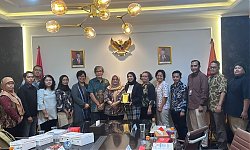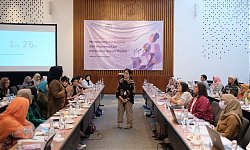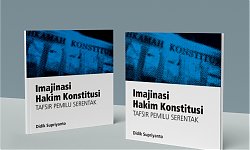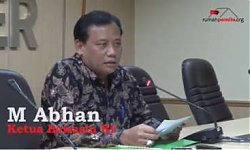The General Election Commission (Komisi Pemilihan Umum or KPU) has confirmed that the procurement of logistics for the 2024 Elections will proceed according to the established schedule and ensure that there will be no delays in distribution. To meet the shorter election logistics timeline, the distribution of election logistics will be based on zoning, taking into account factors such as logistics volume, geographic locations, demographics, and tight schedules.
Information updates on the provision of logistics for the 2024 Elections are crucial for us to convey, ensuring that the electoral process proceeds smoothly. Election logistics and polling station equipment have already been prepared," said the Chair of the KPU, Hasyim Asy'ari, at the KPU office in Jakarta on September 20th.
Hasyim stated that the election logistics preparations are divided into two phases. The first phase includes ballot boxes, booths, ink, and seals. The second phase encompasses the procurement of ballots, forms, and other necessary items.
According to the KPU Decision Number 857 of 2023 regarding the Determination of the National Level Permanent Voter List (DPT) Recapitulation, the total number of Permanent Voter List (DPT) is 204,807,222. This includes 203,056,748 domestic voters distributed across 514 regencies/cities, 7,277 districts, and 83,731 villages/urban sub-district, with a total of 820,161 Polling Stations (Tempat Pemungutan Suara or TPS). Meanwhile, there are 1,750,474 overseas voters from 128 representative countries, and the number of Overseas Election Committees (Panitia Pemilihan Luar Negeri or PPLN), Mobile Ballot Boxes (Kotak Suara Keliling or KSK), and Post is 3,059.
The Head of the Planning, Finance, General Affairs, Household, and Logistics Division of the KPU, Yulianto Sudrajat, stated that to meet the shorter election logistics timeline, the distribution of election logistics will be based on zoning. This approach takes into account logistics volume, geographical factors, demographics, and the tight schedule.
"This zoning strategy is also because we have only 75 days," said Sudrajat.
He further explained that the zoning distribution combines different areas. Some areas with a large number of voters are combined with areas that have fewer voters but are located far from the logistic locations (printing centers).
"So, in common terms, it's a cross-subsidy. There are areas where the voter locations are far from the logistic centers. For example, if there are few voters in a remote area, potential suppliers might not take on the project, as the risks are high, and the costs are significant, but the quantity is small," he added. []
AJID FUAD MARZUKI
Translated by Catherine Natalia











